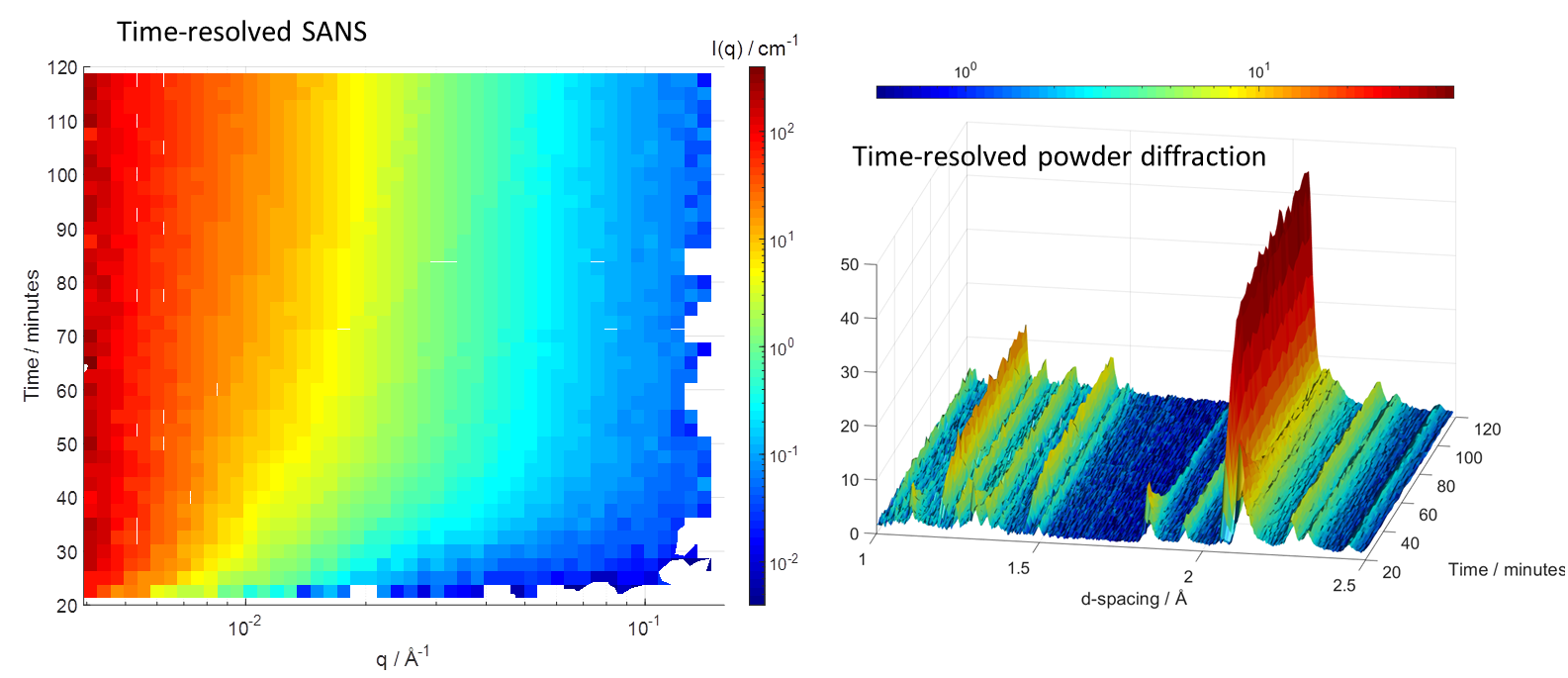Larmor is a flexible instrument that has been optimised for the development of new neutron scattering techniques which use the Larmor precession of neutrons to encode energy or direction. At its core is the ability to perform high throughput SANS and a permanently installed Spin-Echo SANS (SESANS) setup developed by the Technical University of Delft (Netherlands).
In its SANS configuration Larmor is able to study a broad range of science from hard and soft condensed matter to materials science. The open sample position allows the installation of cryostats, cryomagnets, magnets and the numerous other smaller pieces of sample environment required for soft matter studies provided for the ISIS SANS suite.
The installation of the SESANS equipment was completed by TU-Delft in September 2017. Preliminary results are extremely encouraging and have demonstrated that the instrument is performing very well. Successful measurements have been collected over a length scale range from <100nm to 25micrometers. The instrument is available for use with SESANS but should currently be considered to be operating in a commissioning phase.
SESANS may be used to probe length scales larger than those measured with traditional SANS up to length scales similar to that probed by Bonse-Hart USANS. It is not possible to apply a magnetic field at the sample position in this mode and samples should have no net magnetisation. As a consequence the technique is predominantly sued for the study of soft matter.
As part of the ongoing collaboration between ISIS and TU-Delft further capabilities will be developed and added to the instrument in the future.
Recent Developments
The collaboration between ISIS and TU-Delft has recently delivered a new high angle bank for Larmor which has now been used for the first time. The figure below shows preliminary results of a simultaneous SANS and diffraction study of in-situ precipitate growth that is coupled to the phase transformation kinetics in steel by the group of Erik Offerman (TU-Delft).

Technical Summary
Larmor can perform a number of different types of measurement. Please consult the instrument scientists to discuss instrument performance and other technical requirements.
- Small Angle Neutron Scattering (SANS)
- Polarised Small Angle Neutron Scattering (Pol-SANS)
- Polarised Small Angle Neutron Scattering with polarisation analysis (Requires further commissioning)
- Spin-Echo SANS (SESANS)
- Membrane Diffraction with vertical samples
Further technical information can be found here.
Larmor Instrument Scientists
Larmor has 2 dedicated instrument scientists who can provide guidance and support at every stage of your experiment. Before submitting your proposal, please make sure you have discussed your experiment with the instrument scientists who will advise on the suitability of your experiment. For SANS experiments the instrument scientists from SANS2D, LOQ and ZOOM will also be able to assist.
Larmor Beamtime
Beamtime on Larmor can be accessed through the normal ISIS peer reviewed system and through "Express" postal access. A dedicate, bi-annual, peer reviewed application round also exists for researchers from Universites in the Netherlands. These rounds are closed approximately 3 months after the main ISIS rounds and are able to assign a total of 30 days beamtime a year. For further details please see the ISIS beamtime application system pages.
